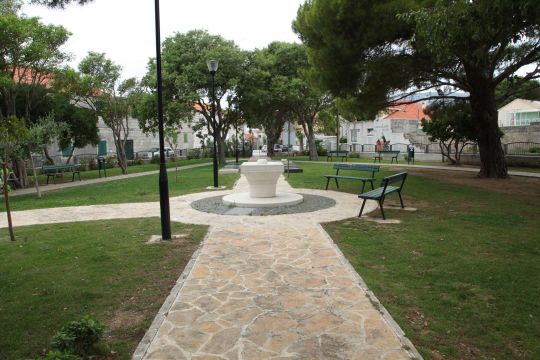Below Mount Mosor, east of Salona, near the present village of Mravinci, in the locality known as Glavičine, an early medieval cemetery was found in 1937. In the following two years, the Bihać Archaeological Society excavated 130 graves, identifying this cemetery as one of the largest old-Croatian cemeteries. Later too, old-Croatian graves were found at several places over a wider area. In the excavated graves, over one hundred objects were found (earrings, rings, decorative copper plates, a knife, a part of a spindle, etc.).
All the Salonitan cemeteries are important for identifying and categorising the population of the area at the time of immigration of the Croats. Every cemetery, namely, shows also its opposite - the life, i.e. existence of a settlement in its vicinity. On the other hand, all these localities produce information valuable in studying architecture, sculpture, items of daily use, jewellery, etc., goods found in graves or in their vicinity.
The cemetery of Glavičine, near Mravince, can be linked with the medieval village of Kuk or Kučine that disappeared at the time of the Turkish wars near Klis. However, in the second half of the 17th century there were mentions of Kučine and Mravince, the few preserved toponyms give grounds for concluding that a part of the population survived the war years. This area, too, was partly inhabited by people from the Dalmatian Hinterland, brought here by the Venetian administration after the Venetian-Turkish wars at the end of the 17th and the beginning of the 18th centuries. It seems that the Mravince parish was established in the beginning of the 18th century, to include the surrounding population as well. In 1873, amidst the village, the people of Mravince built their parish church and dedicated it to the old, previous titular, St. John the Baptist (sv. Ivan Krstitelj), but continuing worshiping St. Mary (sv. Marija) as well.
A special chapter in the history of Mravince is the time when the cement industry started developing in the near vicinity, requiring land for building the plants and for digging marl, mostly in the area of Klis and Mravince. The new industry created jobs, was promoted by the then municipal representatives A. Trumbić and F. Bulić, seeing prosperity in it, especially when the vine pest, phylloxera, destroyed all vineyards in the vicinities of Split. Following partisan conflicts, arguments to and fro, and struggles for petty interests, the first factories were eventually started in 1910.
[Edit mode] Swiper Gallery: att Mravince










